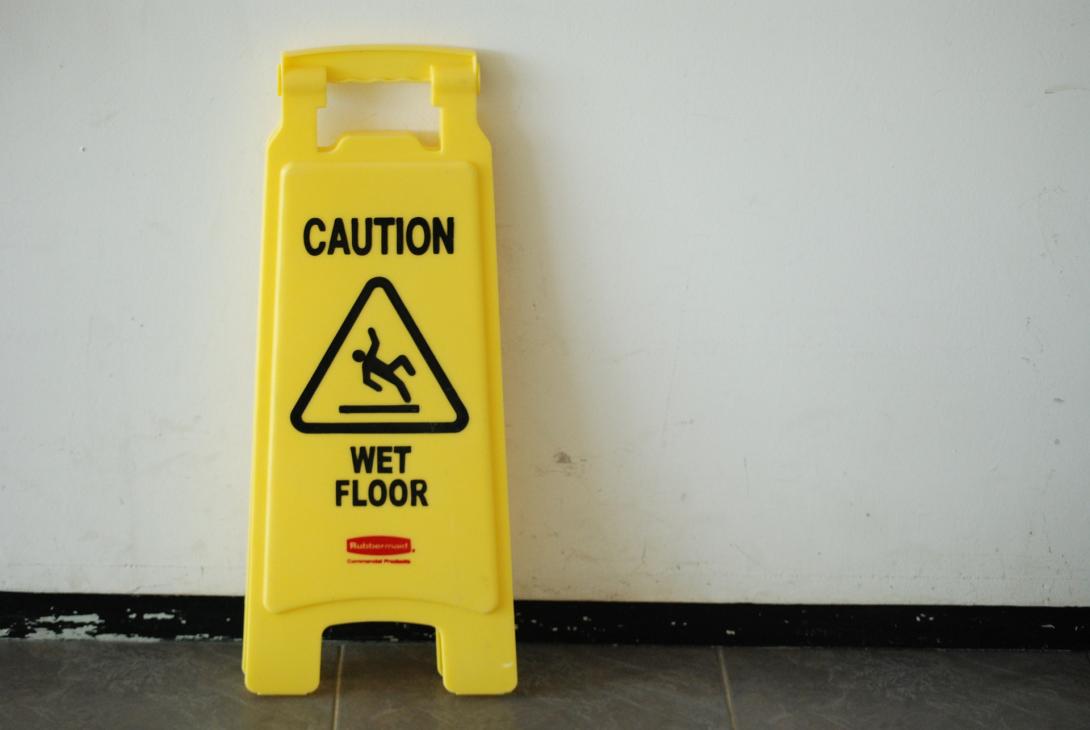Slips, trips and falls at work are collectively the single most common cause of injury in UK workplaces. Karen McDonnell, occupational safety and health policy adviser for the Royal Society for the Prevention of Accidents (RoSPA), looks at how good management of health and safety can ward against such injuries
Slips, trips and falls are a major issue in the health and safety industry, both in the workplace and in day-to-day life. According to Health and Safety England (HSE), there were around 5.5 million working days lost in 2016/17, with falls making up a significant amount of that total. Within that time, there were 40 falls from height that resulted in a fatal injury, and 111,000 non-fatal reported slips, trips, or falls on the same level.
Slips, trips and falls are collectively the single most common cause of injury in UK workplaces, which is cause for employers to ensure they are creating the safest possible environments for its employees. This proves a challenging task when the ageing workforce has significantly risen in recent years. In the over-65s there are around 255,000 falls-related emergency hospital admissions in England alone every year, and in 2015 more than 4,500 people in England in this age bracket died as a result of a fall.
RoSPA aims to promote a ‘whole life’ approach to safety, seeking to assure freedom from serious accidental injury from early years and throughout life. Good management of health and safety by organisations can help to support safety across all stages of life, not least by being an arena in which people learn about the importance of recognising hazards, assessing risks, and choosing the right preventive/protective measures to stay safe.
A particular organisation that requires additional safety measures for falls due to the high risk levels of hazards is hospitals. Hospitals cater for thousands of people of different circumstances on a daily basis, which means a more intense approach to safety should be taken.
A health and safety culture
Falls represent a significant problem in hospitals. Efforts to improve fall prevention require a system approach that achieves organisational change through modifications to workflow, communication, and decision making. This type of organisational change can be difficult to achieve, but can be done through following basic principles, implementing schemes, and changing the culture of health and safety within the workplace.
There are certain basic principles that, if implemented effectively, enable organisations to achieve the absence of risk. Hospitals should have a system in place to manage health and safety, in which they plan, organise, control, monitor and review all preventative measures. Main hazards should be identified and risks assessed to ensure the risk control measures are sufficient. These measures, however, will only be used and maintained if employees are informed, trained and supervised.
In order to maintain a healthy and safe workplace certain things should be checked regularly, like: consulting your workforce; conducting regular health and safety checks; reporting, recording and investigating accidents and near-misses; and providing employees and others with certain basic information.
It is also beneficial for employers and employees to make sure suitable first aid and welfare facilities are provided, and employers’ liability insurance. Time should be made periodically to review performance and then feedback any lessons learned to improve controls.
A risk assessment will help you identify the slip and trip hazards that exist in your workplace and their potential for causing people to slip or trip. Through this assessment, employers should have some ideas of how to prevent these accidents. While risk assessments provide the opportunity to identify risks and solutions, you cannot eliminate all risks. It is essential that organisations implement control measures that are proportionate to the risk in question, and a good approach to health and safety balances control measures sensibly against other needs.
With hospitals, the added factor of patients makes for a challenging task for creating a healthy and safe environment for the thousands of people that are in and out of them every day. The most significant factors of patients falling in a hospital are: walking unsteadily; confusion; being incontinent or needing to use the toilet frequently; a history of falling; and taking sedatives or sleeping tablets.
Small tasks such as good housekeeping can offer much protection in the way of falls. Keeping walkways clear from clutter, removing or tying trailing wires, and immediately mopping up spillages are some simple responsibilities that should become a habit for employers and employees in the workplace, and could prevent accidents, especially for hospital patients that you know are vulnerable.
Stand Up, Stay Up
While there are simple steps you can follow to ensure you are creating a safe work environment, there are also schemes that can be implemented in the workplace and in everyday life. RoSPA offers a programme funded by the Department of Health, called Stand Up, Stay Up, which aims to unite a network of health professionals and falls prevention practitioners to share best practice, knowledge and advice. Stand Up, Stay Up is a scheme that contributes to the fight against fall injuries, by learning from one another and being hands on with finding the root cause of falls, so as to find the solutions.
Safe and healthy working is the foundation upon which organisations’ are built – not just because of it being morally correct, but because it is the most cost-effective and efficient. It is often missed, just how much employers lose out on due to safety failures, and so prioritising a healthy and safe working environment can only prove beneficial.





